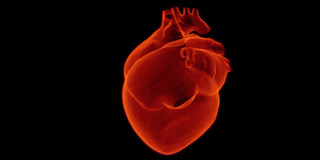Most people have suffered from influenza (flu) at some time in their lives, so you probably have personal experience or a good idea of the symptoms and progression of the disease. However, influenza is actually one of the world’s most serious diseases. The pandemic of flu that occurred in 1918, immediately following the First World War, is thought to have killed up to 50 million people: many more than died in the war itself. More recently, the 2009 ‘swine flu’ pandemic caused widespread panic across parts of the world, although it resulted in relatively few fatalities.
The following course is a case study of influenza that considers a range of topics such as the nature of the virus itself, its spread, treatment, and diagnosis. There are activities to complete and videos to watch as you work through the text, and a set of self-assessment questions at the end of the course that allow you to judge how well you have understood the course content.
Learning outcomes
After studying this course, you should be able to:
- define and use, or recognise definitions and applications of, each of the glossary terms in the course
- describe influenza viruses, their structure, how they are transmitted, how they infect cells and replicate and how they produce their damage in the host
- outline the different types of immune defence which are deployed against flu infections, distinguishing those that act against infected cells from those that act against free virus
- describe how strains of the virus change over time, and relate this to the flu viruses that occur in birds and other mammals
- explain how the epidemic pattern of influenza can be related to the evolution of new strains of virus and to the specificity of the immune response against each strain.
Course Curriculum
| 1. Background to the case study | |||
| Background | 01:30:00 | ||
| Defining influenza | 01:30:00 | ||
| Influenza infection in humans | 01:30:00 | ||
| Influenza infection in other species | 01:30:00 | ||
| 2. Influenza viruses | |||
| About Influenza viruses | 01:30:00 | ||
| Structure of influenza | 01:30:00 | ||
| Designation of strains of influenza | 01:30:00 | ||
| Infection and replication | 01:30:00 | ||
| Cellular pathology of influenza infection | 01:30:00 | ||
| 3. Patterns of disease | |||
| Patterns of disease | 01:30:00 | ||
| Tracking the emergence of new strains | 01:30:00 | ||
| Immune responses to influenza | 01:30:00 | ||
| Summary of the response | 01:30:00 | ||
| 4. Antiviral treatments | |||
| Antiviral treatments | 01:30:00 | ||
| 5. Diagnosis of influenza | |||
| Diagnosis of influenza | 01:30:00 | ||
| Initial identification of influenza infection | 01:30:00 | ||
| Determining the subtype of influenza | 01:30:00 | ||
| Summary – Influenza | 01:30:00 | ||
| Acknowledgements – Influenza | 00:30:00 | ||




